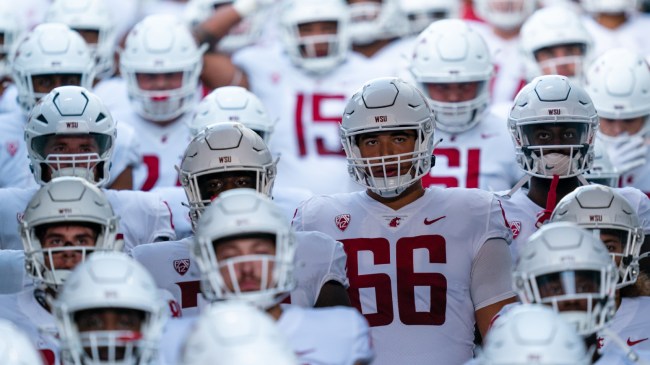
Getty Image
The College Football Playoff committee has made a major change to its upcoming structure given the sport’s recent conference realignment.
More specifically, that adjustment comes following the demise of the PAC-12 as we’ve come to know with the league quickly going from 12 teams to two in a year’s time.
The “Conference of Champions” saw its first hit in the summer of 2022 when USC and UCLA announced plans to join the Big Ten. With the new affiliation, the Trojans and Bruins are set to land a major payday with their inclusion seemingly helping the league secure a $1B media rights deal.
The following offseason, the floodgates opened.
Arizona, Arizona State, Colorado, and Utah are destined for the Big XII while Oregon and Washington will follow the Los Angeles programs’ lead and enter the B1G.
Just when things seemed to be done, Cal and Stanford bailed for the ACC, trading local travel comforts for a chance to leave the sinking league.
Now, just Oregon State and Washington State remain.
Prior to those departures, the College Football Playoff approved a 12-team field.
That field initially assumed a 6 + 6 structure, meaning six conference champions would receive bids followed by the next six most highly rated teams in the CFP Poll.
Essentially, this was a guarantee that the Power Five leagues would have representation through their champion, as well as the top ranked Group of Five conference champ.
But this decision was made before the PAC-12 crumbled.
After an evaluation, the CFP opted to revise that format to a 5 + 7 model, taking one of those conference champion bids away and giving it to another at-large qualifier.
Deductive reasoning can lead you to the PAC-12 (or PAC-2) being snubbed in this situation, as it no longer holds P5 status.
Most would agree that having just two teams in the conference race would give an unfair advantage in terms of playoff inclusion, though Washington State and Oregon State argued that they shouldn’t be penalized for the departures of their peers.
Still, when it came decision time, a unanimous vote was passed to approve the 5 + 7 structure – which included a ‘yes’ vote from the PAC-2.
The Cougars and Beavers will no longer have the luxury of competing for an auto-bid, making it that much harder to land a playoff spot.
Dennis Dodd suggests payment was given to pass that vote.
The CBS Sports writer hinted at monetary incentive for the PAC-2 to approve the new College Football Playoff format.
Sources told @CBSSports Oregon State and Washington State received a few million dollars extra these next two years. Whether that was directly responsible for Schulz switching his vote is not known. The Pac-2 had been asking for A5 status going forward per reports.
— Dennis Dodd (@dennisdoddcbs) February 20, 2024
“Sources told CBS Sports Oregon State and Washington State received a few million dollars extra these next two years,” the now-deleted post read. “Whether that was directly responsible for Schulz switching his vote is not known. The Pac-2 had been asking for A5 status going forward per reports.”
Though he didn’t directly connect the two, he did see the timing as interesting.
The league had reportedly been fighting to retain P5 status, but its sudden shift does raise question. As if things weren’t already difficult enough for the Beaver and Cougars with vultures picking apart their rosters and coaching staffs, this CFP news could make it even harder to remain relevant.
Washington State and Oregon State will play next season as quasi-Mountain West Conference members as they try to figure out how to proceed.
